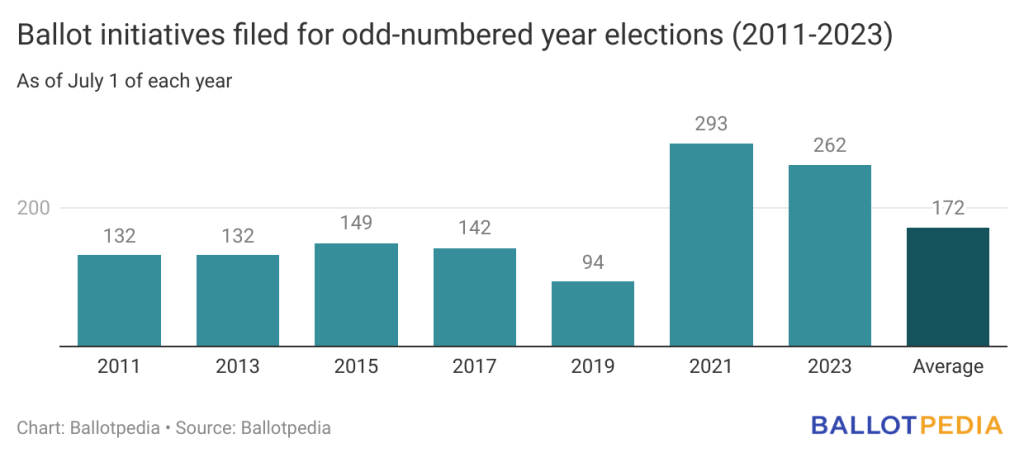As of July 1, initiative sponsors have filed 262 citizen-initiated ballot measures for elections in 2023, which is 90 more than the average (172) of the last six odd-year numbered cycles (2011-2021). 2023 has the second-highest number behind 2021, which saw 293 initiatives filed by this same point in the cycle.
Like the past six odd-numbered cycles, Washington has the most initiatives filed this year with 221. Between 2011 and 2021, initiatives filed in Washington made up more than half of the total number during each odd-numbered year.
In 2023, four initiatives have so far been certified for two election dates in two states—Oklahoma and Maine.
On March 7, Oklahoma voters defeated a ballot initiative that would have legalized the use of marijuana for recreational use. The initiative sponsors had initially targeted the 2022 ballot, but due to legal challenges and statutory deadlines, Gov. Kevin Stitt (R) ordered the measure to be placed on the March 2023 ballot.
Maine voters will decide on at least three ballot initiatives in November that relate to access to mechanical data in a vehicle’s on-board diagnostics or telematics system, the creation of a municipal electric transmission and distribution utility, and voter approval for borrowing by state entities and electric cooperatives that exceeds $1 billion. A fourth indirect initiative related to foreign spending in elections was passed by the Maine legislature. If the governor vetoes it, the initiative will also appear on the ballot.
Two initiative campaigns in Ohio submitted signatures to the secretary of state on July 5. To qualify an initiated constitutional amendment, sponsors are required to submit 413,488 valid signatures in Ohio. Ohio Physicians for Reproductive Rights and the Ohioans for Reproductive Freedom PAC, the campaigns behind an amendment to establish a right to reproductive decisions in the state constitution, submitted 710,131 signatures.
In Ohio, initiated state statutes begin as indirect initiatives, with campaigns needing to collect signatures equal to 3% of the votes cast for governor (124,046 signatures) to place their proposal before the Ohio State Legislature. If the legislature fails to enact the proposed legislation, additional signatures equaling another 3% of the gubernatorial vote must be collected in order to place the measure on the ballot. The Coalition to Regulate Marijuana Like Alcohol, which is sponsoring a marijuana legalization effort, submitted 222,198 signatures after the state legislature took no action on the proposal before the May 3 deadline.
Between 2011 and 2021, an average of five ballot initiatives were certified for statewide ballots each cycle. 2011 had the highest number of initiatives to make the ballot with 10 certified of the 137 filed.
Additional reading: 2023 ballot measures



